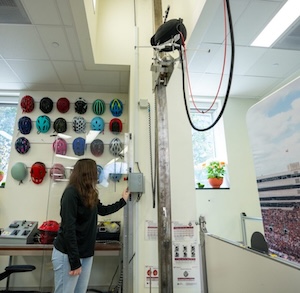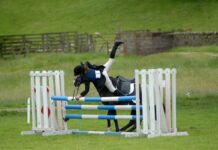Rankings “reflect concussion risk associated with each model.”
Falling off a horse during high-speed cross-country or race riding changes the way a rider’s helmet behaves, researchers have discovered.
The study by Virginia Tech Helmet Lab has led the American university to update its STAR helmet rating of 49 products from leading brands.

“While our testing already incorporated rotational head motion, falling off a horse at high speed can put a large force across the helmet and generate rotation in a different way than our previous testing,” said Steve Rowson, helmet lab director.
“This means that the helmets behave a little differently during low-speed and high-speed impact scenarios.”
This is the first time Virginia Tech Helmet Lab has included scenarios where horse and rider are moving with horizontal velocity – typical of racing and cross-country falls - in its helmet testing.
In addition to various fall scenarios, researchers also performed a computer modeling analysis of head impacts to identify the best method for quantifying rider injury risk.
Both tests are now included in its STAR rating of 49 different helmets.
The lab says the ratings “reflect the concussion risk associated with each model and are meant to inform consumer decisions about helmet purchasing.”
Helmets are rated on a scale of one to five stars, with a one-star helmet offering the least head protection, and a five-star helmet offering the most protection and reducing concussion risk.
The research was funded by Jacqueline Mars, the US Hunter Jumper Association, the US Equestrian Federation, the US Eventing Association and an anonymous private donor.
Updated ratings are available here.
Original Study is available here.

















